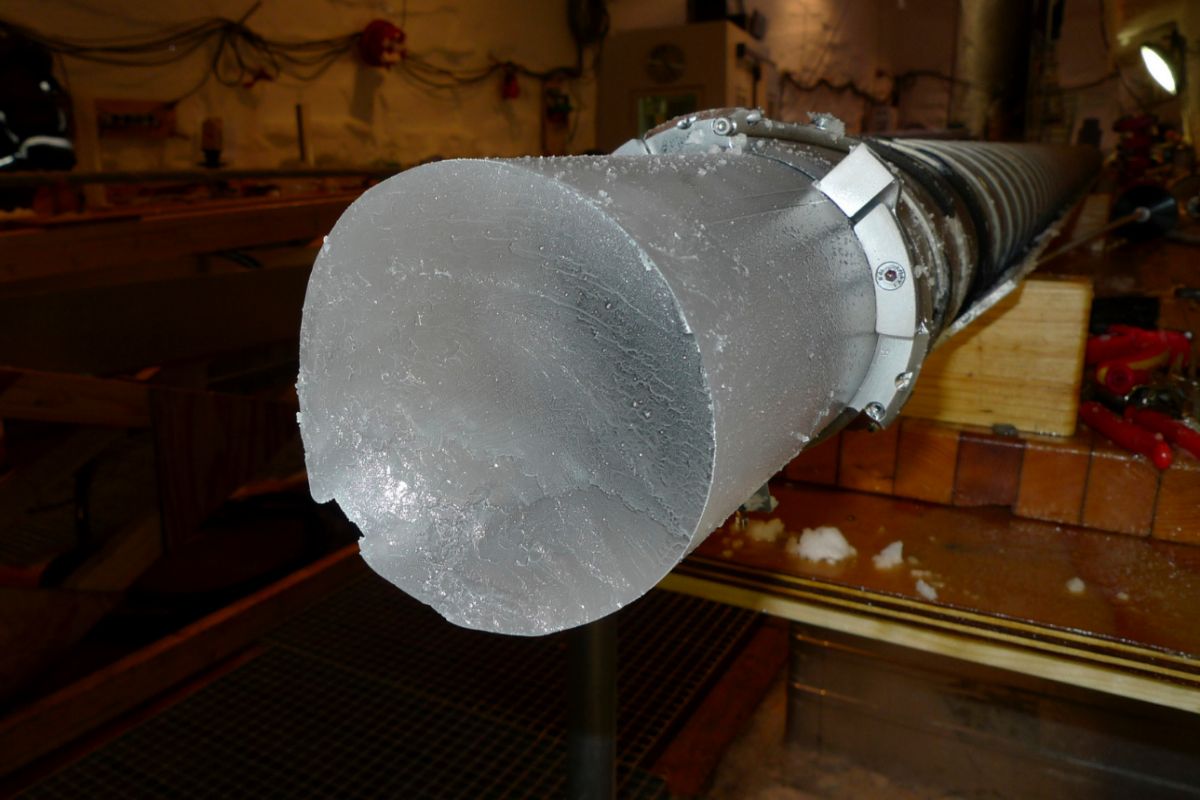- Astronomy: The surprising connection between a medieval eclipse, a volcanic eruption and polar ice
- Volcanism: Is the planet's volcanic activity increasing?
- Geology.The influence of the Moon on volcanic eruptions
- Paleontology: the 'Pompeii' of dinosaurs buried by a volcano in China
In 43 BC, a volcanic eruption was triggered in Alaska so powerful that its effects were felt more than 8,000 kilometers away. Ancient Rome experienced a strange and sudden cooling period that ruined crops, caused famines and contributed to the spread of diseases at a very turbulent time in its history. A few months before, Julius Caesar had been assassinated and the Republic was experiencing a great crisis that culminated in 27 BC with the birth of the Roman Empire.
Across the world, large amounts of material spat out by the Okmok volcano had accumulated in the stratosphere. These are sulfurous gases that can remain in the atmosphere for years and are capable of disturbing the climate in other regions and, as revealed by an international team of scientists and historians this Monday, their ashes altered the climate of the Mediterranean region .
Their conclusion, published in the journal Proceedings of the National Academy of Sciences (PNAS), is the result of the analysis and comparison of various ice samples obtained in various places in the Arctic, such as Greenland and Russia, that conserve remains of ash. Some of these drilling was done in the 1990s, and ice samples are preserved in the US, Denmark, and Germany. Scientists were able to determine two different eruptions at the same time. One of them very powerful but short, around 45 BC and the other much larger and longer in 43 BC, which lasted two years and is considered one of the largest eruptions in the last three millennia.
«In the last 2,500 years there have been other massive eruptions, such as that of the Samalas volcano (Indonesia) of 1257 and 1258; the eruption of an unknown volcano in 426 BC and that of the Tambora, also in Indonesia, in 1815. The latter was responsible for the year without summer that at least the US and Europe lived. One of the most interesting things about the Okmok eruption in 43 BC. C is that it took place during a very important period of western civilization , ”explains Joe McConnell, the scientist at the Reno Desert Research Institute who is leading this research.
Colder and abundant rains
According to this study, the two years after the Okmok eruption are among the coldest in the Northern Hemisphere in the past 2,500 years. Climate models suggest that average summer and fall temperatures were about seven degrees lower. Rains in summer were between 50 and 120% more abundant in southern Europe, while in autumn they rose 400%.
"In the Mediterranean region, these damp cold and humid conditions at such an important time of year for agriculture, from spring to autumn, likely reduced crop yields and exacerbated food supply problems during the political conflict that lived in that period, "says Andrew Wilson, an archaeologist at the University of Oxford. For this researcher, the results of this study "give credibility to the chronicles that spoke of cold, famine, food shortages and diseases described by ancient sources."
Some of the authors participated in another study in 2017 that linked an eruption around 44 BC with the suppression of the floods of the Nile, essential for harvests, causing a great famine in Ancient Egypt. Lack of food was one of the factors that led to the insurrection during the Ptolemaic dynasty, which officially ended in 40 BC. C. after the suicide of Cleopatra. Although there were other factors in Rome as well, the authors believe that the consequences of that cold period contributed to the end of the Republic.
"Finding evidence that a volcano on the other side of the world erupted and contributed to the rise of the Roman Empire is fascinating," says McConnell.
Volcanic activity also helps explain some strange atmospheric phenomena that were described in antiquity, at the time when Julius Caesar was assassinated and that were interpreted as omens: solar halos, darkening of the Sun or three suns that appear in the sky ( an optical phenomenon called parhelium or 'dog of the sun'). However, the authors say, these observations took place before the Okmok eruption in 43 BC. C. reason why they think that they are probably related to a smaller eruption of the Sicilian volcano Etna in 44 a. C.
In accordance with the criteria of The Trust Project
Know more- Science and health
- science
ArcheologySpanish archaeologists discover three pharaonic tombs devoid of luxuries
Covid-19 Females have published fewer studies on the pandemic
EnvironmentSiberia will take more than 10 years to recover from the thermal power plant spill
See links of interest
- News
- Translator
- Programming
- Calendar
- Horoscope
- Classification
- League calendar
- Films
- Cut notes
- Themes
- Barça - Kirolbet Baskonia
- Fuenlabrada - Numancia
- Internazionale - Sampdoria
- Real Sociedad - Real Madrid
- Herbalife Gran Canaria - San Pablo Burgos

